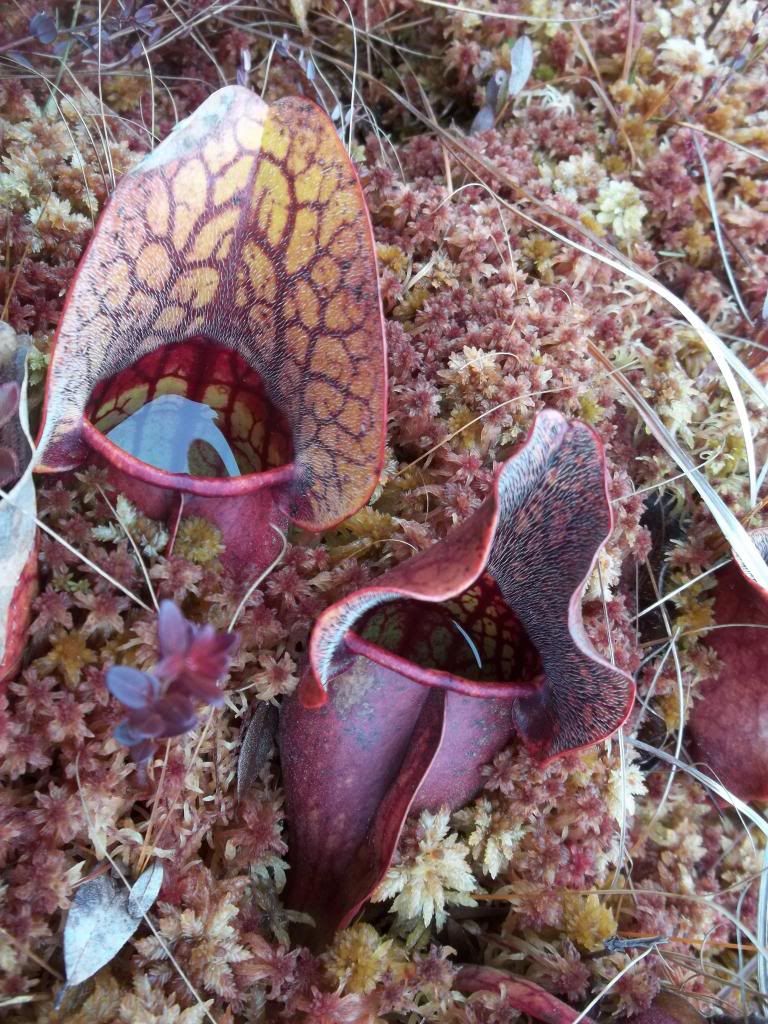


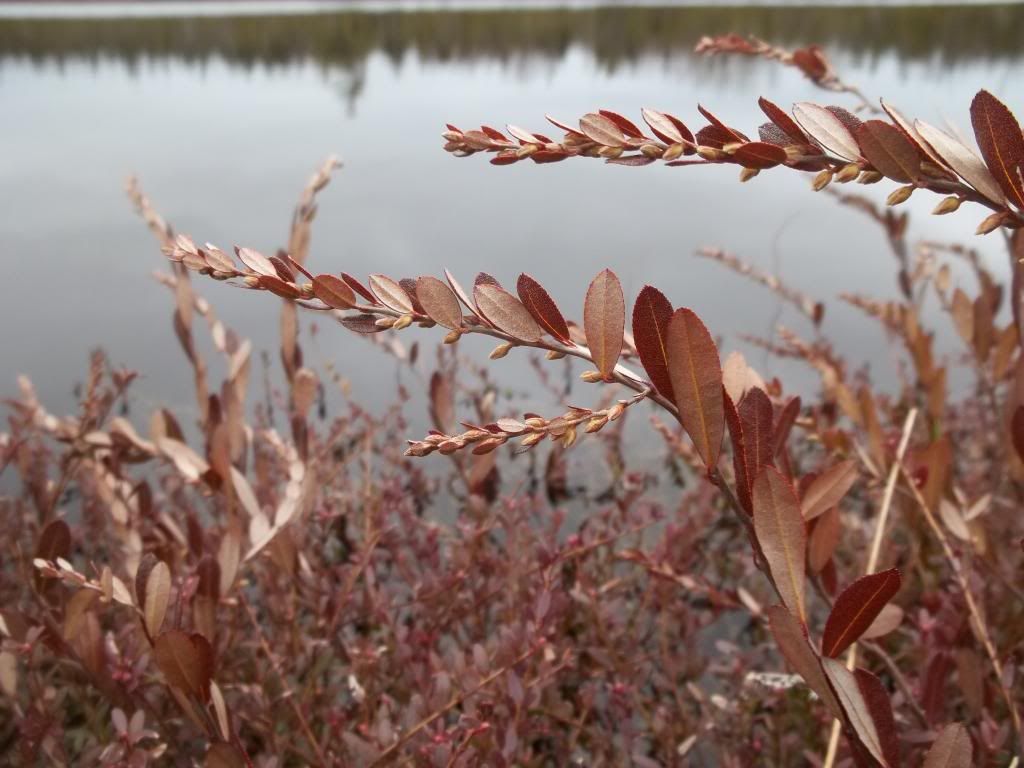
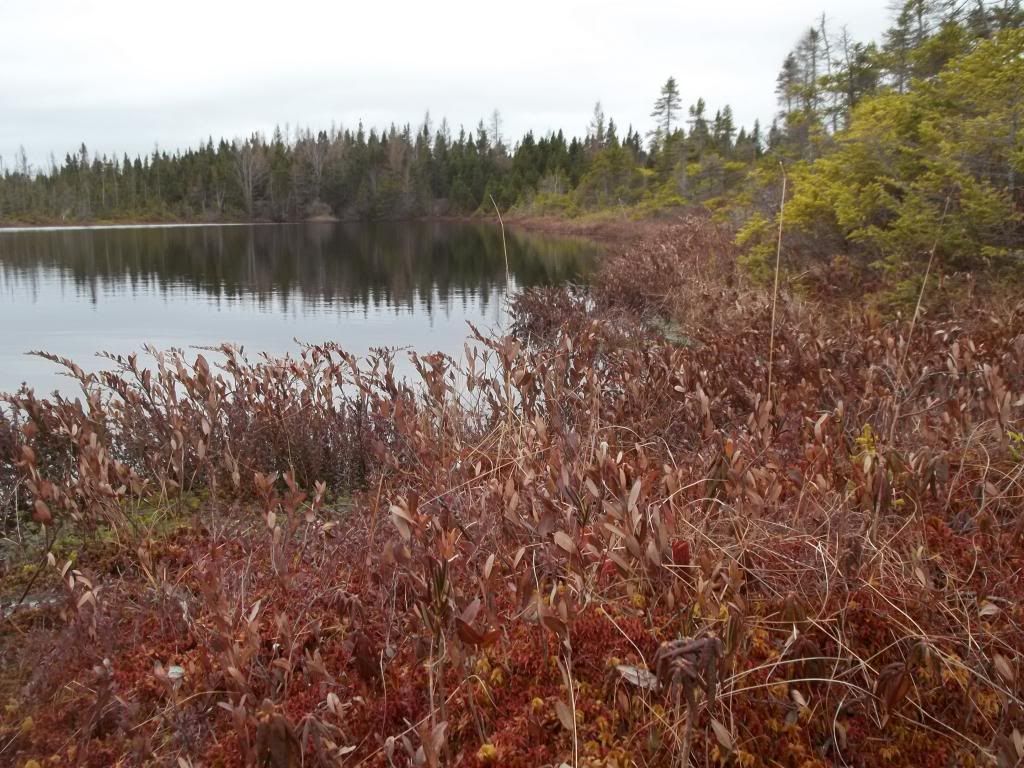
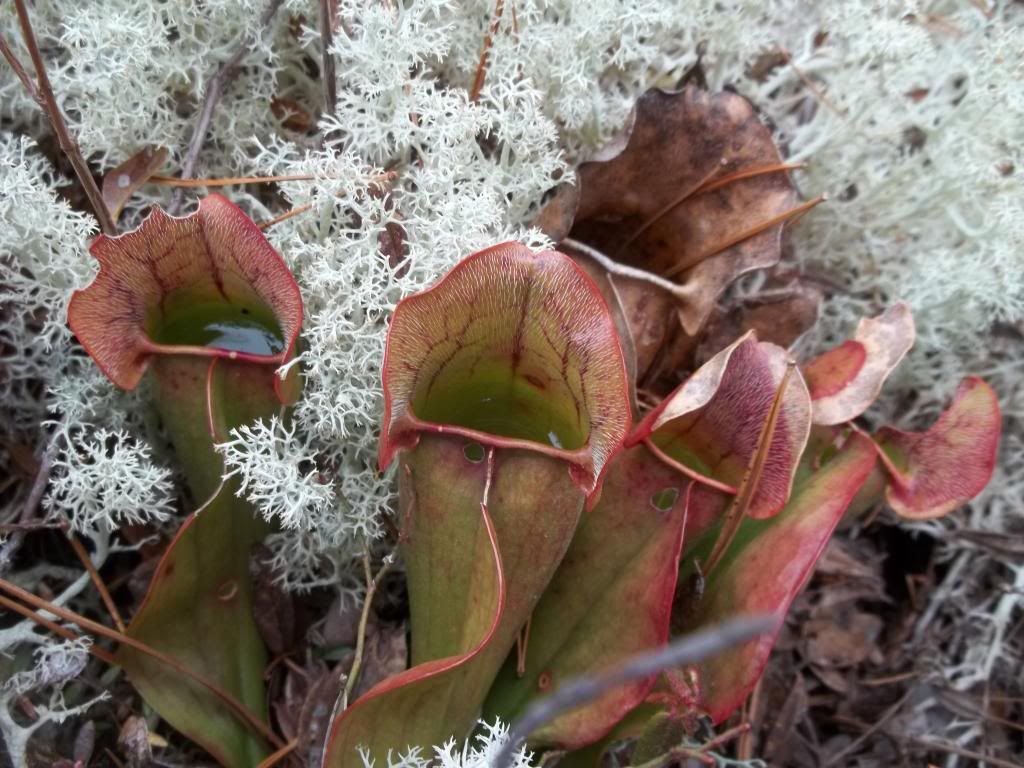
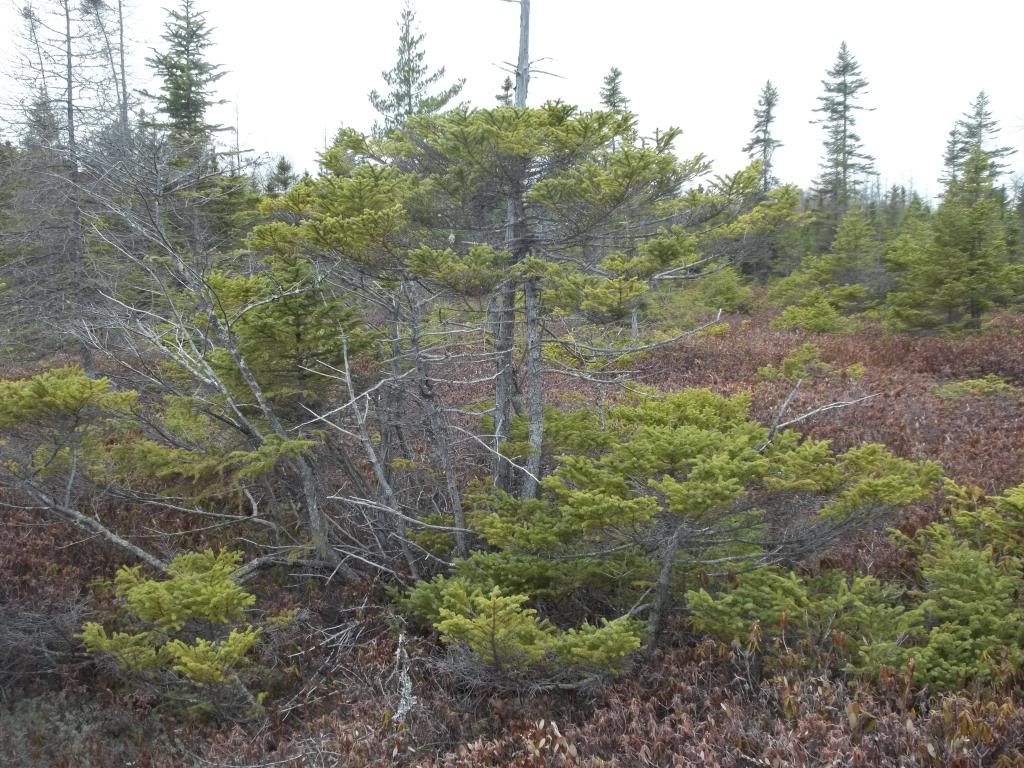
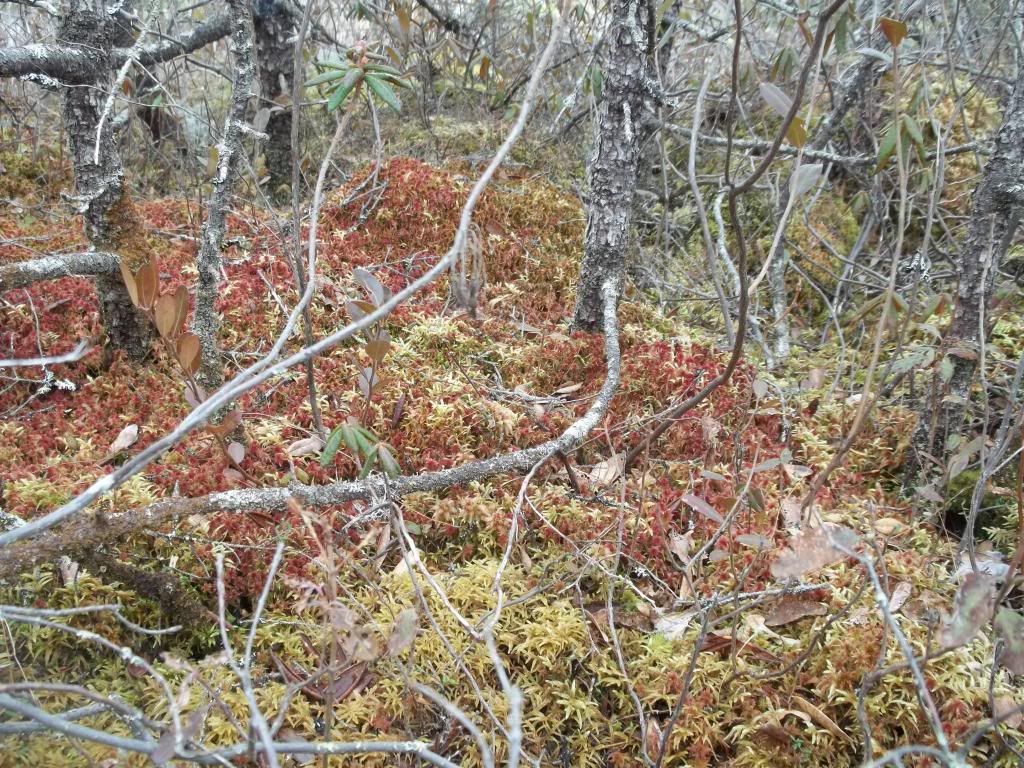
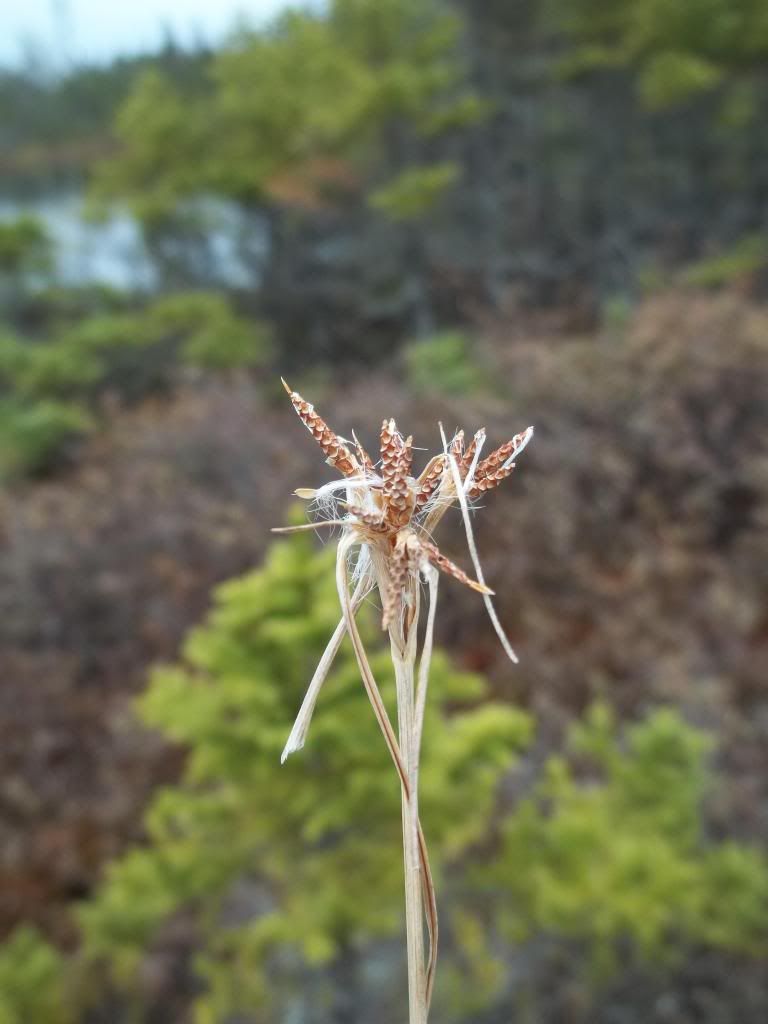
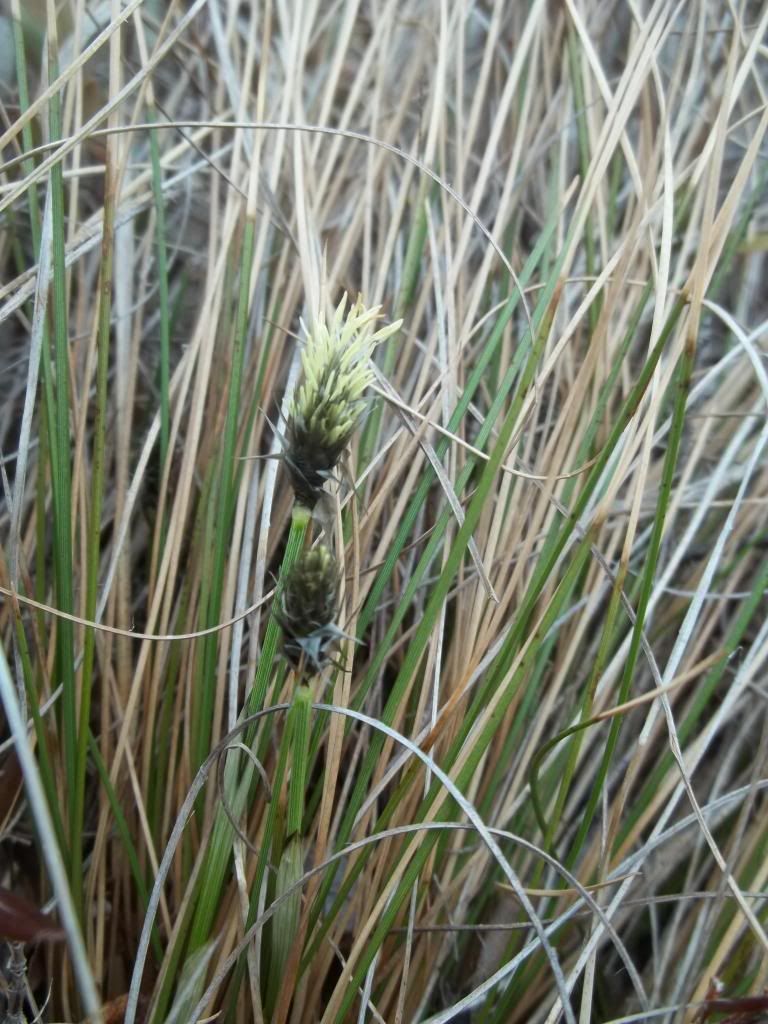 Yesterday, we decided to go explore a peat bog by our farm. This is the type of bog from witch peat moss is harvested. Peat moss is the layer of decomposed Sphagnum moss that everything in the bog is growing in. It takes hundreds to thousands of years for a peat bog to form. To harvest it, the peat moss is "mined" A proses in witch they scrape off the top, living layer and bale up everything underneath. to read up on this Here is a good article on peat moss production.
Yesterday, we decided to go explore a peat bog by our farm. This is the type of bog from witch peat moss is harvested. Peat moss is the layer of decomposed Sphagnum moss that everything in the bog is growing in. It takes hundreds to thousands of years for a peat bog to form. To harvest it, the peat moss is "mined" A proses in witch they scrape off the top, living layer and bale up everything underneath. to read up on this Here is a good article on peat moss production. I found the bog to be hauntingly beautiful. covered in a springy white and red carpet of moss. every time you take a careful step forward, seeing how far your foot sinks before putting all your wait on it, the ground springs back up behind you, making it sound as if you were being fallowed. Lots of rare animals and plants grow in there too. there are 3 types of carnivorous plants to be found Pitcher plants, sundews and butterwort. of witch I only spotted pitchers, but it may still be too early in the season for the others. there are also some orchids and bog rosemary as well as endangered birds that call it home. Due to the pour quality of the soil, the trees, pine and spruce that manage to grow amongst the moss are naturally bonsaied. they can be hundreds of years old, and yet, be only a few feet high.
I found this trip to be eye opening, and you can bet, I won't be buying peat moss ever again. I urge all of you to do the same. Use leaf mold, and compost instead. Better for the environment, and healthier for your garden.
No comments:
Post a Comment